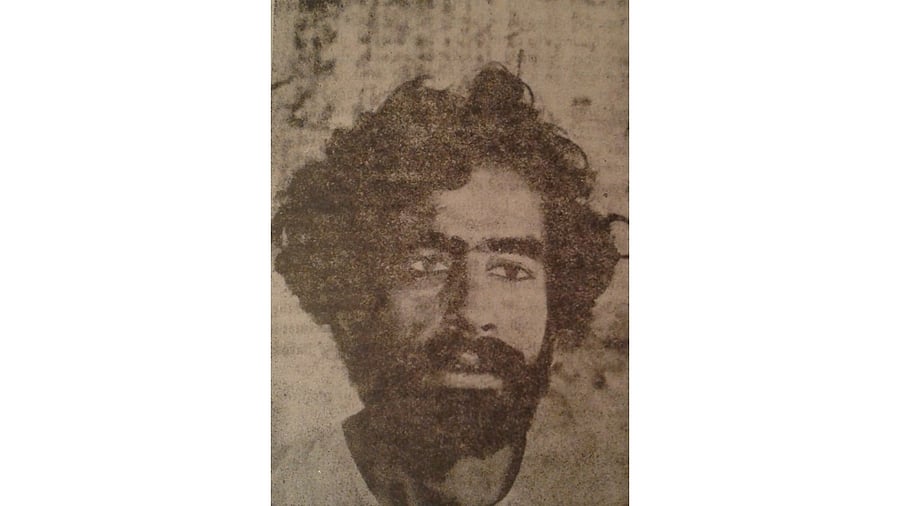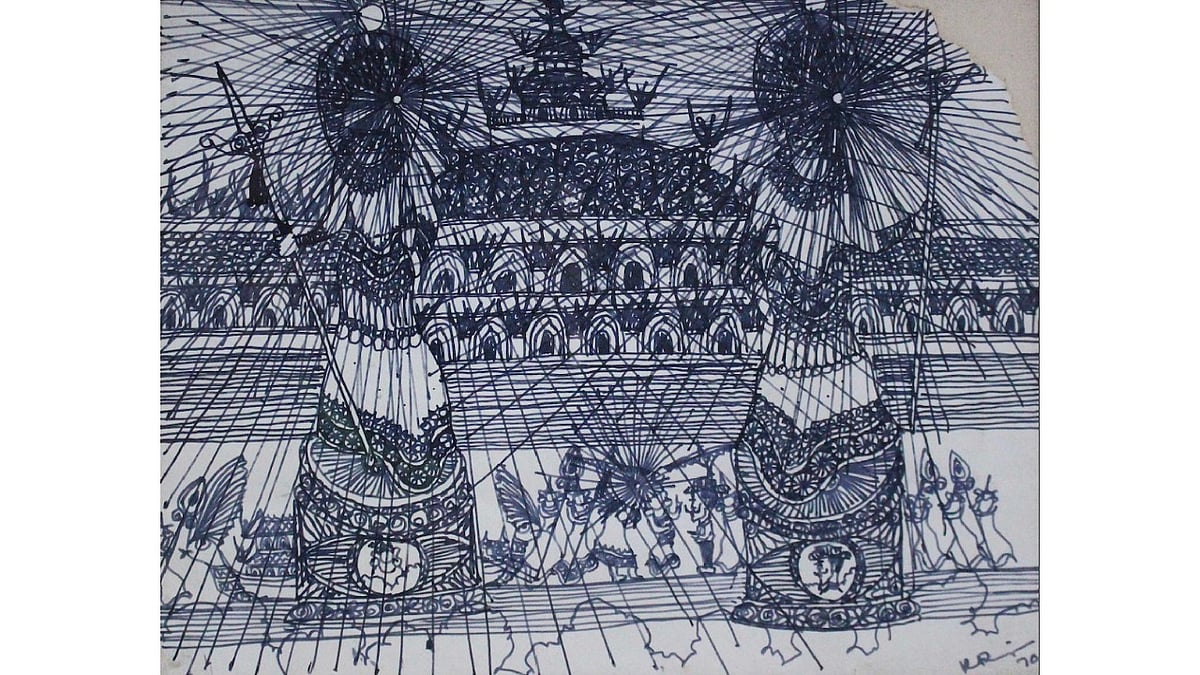

To use a well-worn cliché, K Ramanujam has so far remained a footnote in a chapter of modern Indian art. The chapter is Madras Modern, the art movement that emanated from South India under the leadership of K C S Paniker. It created a modernist idiom for Indian art rooted in indigenous sources yet distinct from what the Progressives had done in Bombay or the Calcutta Group had done in the eastern metropolis on a far modest scale.
But things are set to change for the works of the late artist—who led a tumultuous life and had a tragic end—with the seminal solo show that opened at the Kiran Nadar Museum of Art (KNMA), New Delhi, on 23 March.
Titled K. Ramanujam: Into The Moonlight Parade…, it is curated by Roobina Karode, chief curator and director of KNMA, the country's largest private museum.
"As a curator, I had always responded to K Ramanujan's works and wanted to do the show because, at KNMA, we take an interest in under-represented yet amazing practices by artists who have remained unsung," says Karode. She adds that the show holds special significance in the world still grappling with the aftermath of Covid-19.
"The torment of life has taught us to keep sane and calm. I was drawn to Ramanujam's life and art; he lived a solitary life and did not get empathy from a society that did not accept him easily. But he created incredible paintings from his imagination, in a peculiarly unique practice," she adds.
K Ramanujam (1941-1973) was born into a conservative Tamil Brahmin family in Triplicane, one of the oldest neighbourhoods of Chennai (then Madras). A middle school dropout, he was driven away by relatives and spent penniless days on the streets of Madras. He gradually grew socially isolated due to his speech impairment and alleged schizophrenia.
While earlier he had found solace in the children's magazine "Chanda Mama," as an adult, he frequented film shoots in Kodambakkam, fascinated by the elaborate sets created for mythological dramas.
However, his life-altering event came when a relative, noticing his talent for drawing, brought him to the Government College of Arts and Crafts and left him in the care of the college principal, K C S Paniker.
The pioneering artist of the Madras Modern movement not only nurtured Ramanujam but also made him a founding member of the Cholamandal Artists' Village, on the outskirts of Madras, in 1966. The village became the most prominent artists' commune in India and helped shape some important careers of Indian art in myriad ways.
What makes Ramanujam's practice unique is that his surrealist drawings and paintings were translations of his oneiric experiences. His intensely personal and intuitive style combined naiveté and innocence with exquisite architectural details. This was not a conscious artistic exploration of the dream imagery but a natural phenomenon for Ramanujam, who suffered from mental impediments.
His works, therefore, are a window to his imaginary world, which, perhaps, was kinder than the real world that he inhabited—peopled by kings, queens, a princess (which Karode deciphers as the artist's longing for companionship), processions, drawings, and many other fantastical elements.
"It was because of art that he could live a while. His work touches upon the core of life," says Karode about the artist who took his own life at 33.
The KNMA show, which runs concurrent with the Atul Dodiya solo, is the biggest on the artist outside Tamil Nadu, bringing together 50 of his works.
Karode says it was not easy to put together comprehensive material on the artist, as there is not much literature and information available on him. Many of his contemporaries at the Cholamandal Artists' Village have passed on.
An interesting highlight is a 13-feet panorama by the artist, "My Dream World," that he painted in the last year of his life. The last important show that brought his works together from across India, was held in Chennai in December 2019–January 2020 at Ashvita gallery.
(The writer is New Delhi-based journalist, editor and arts consultant)